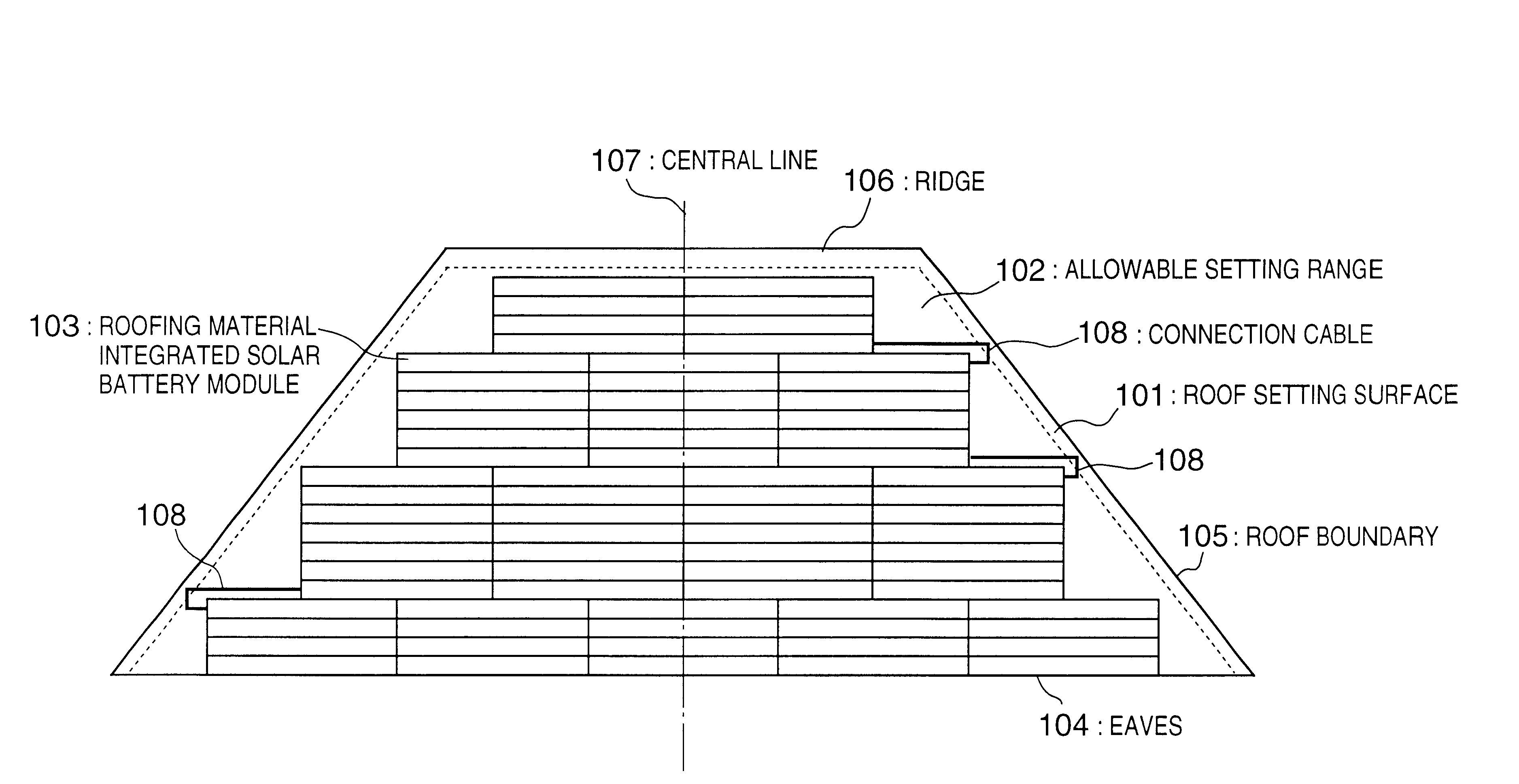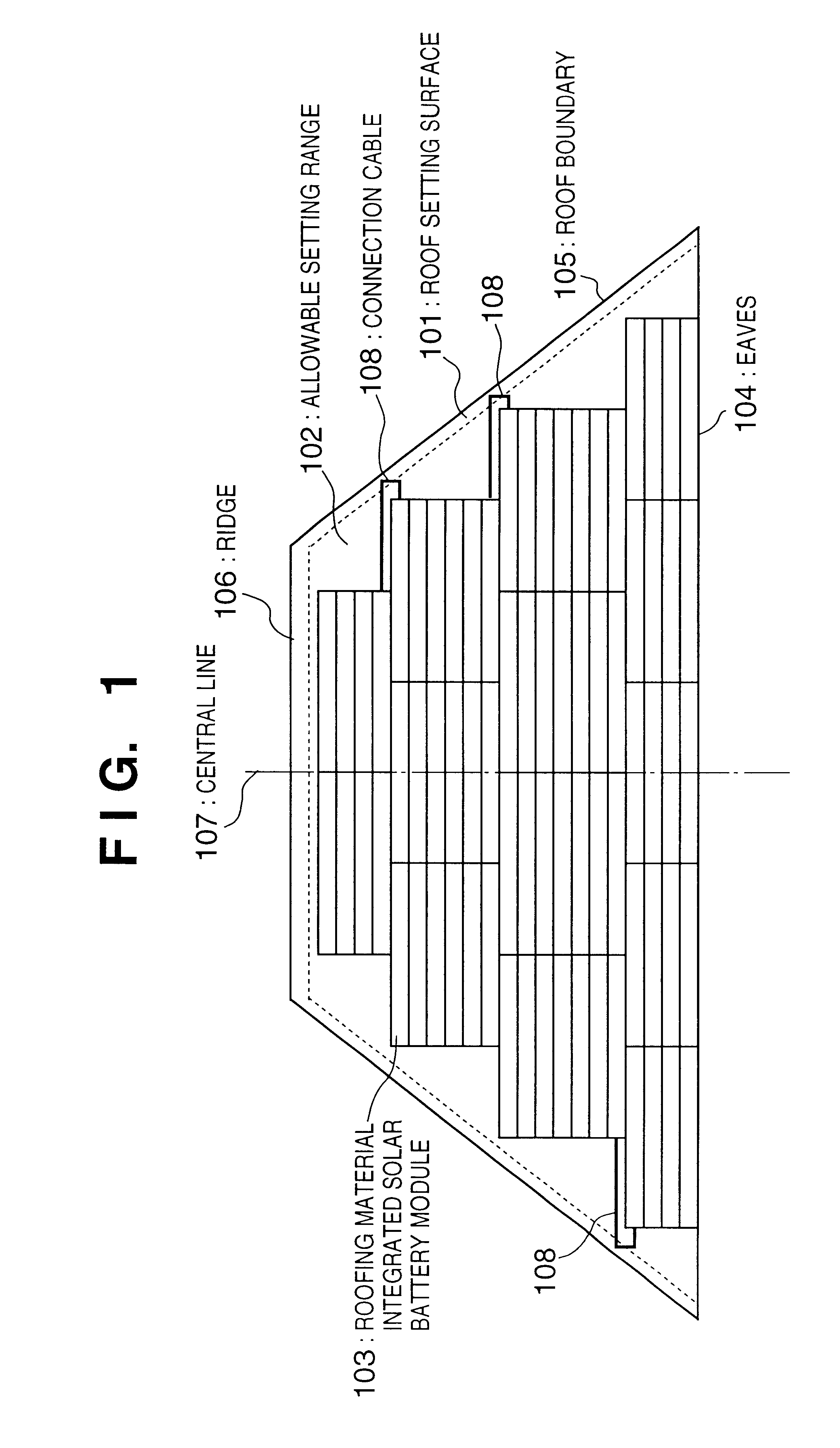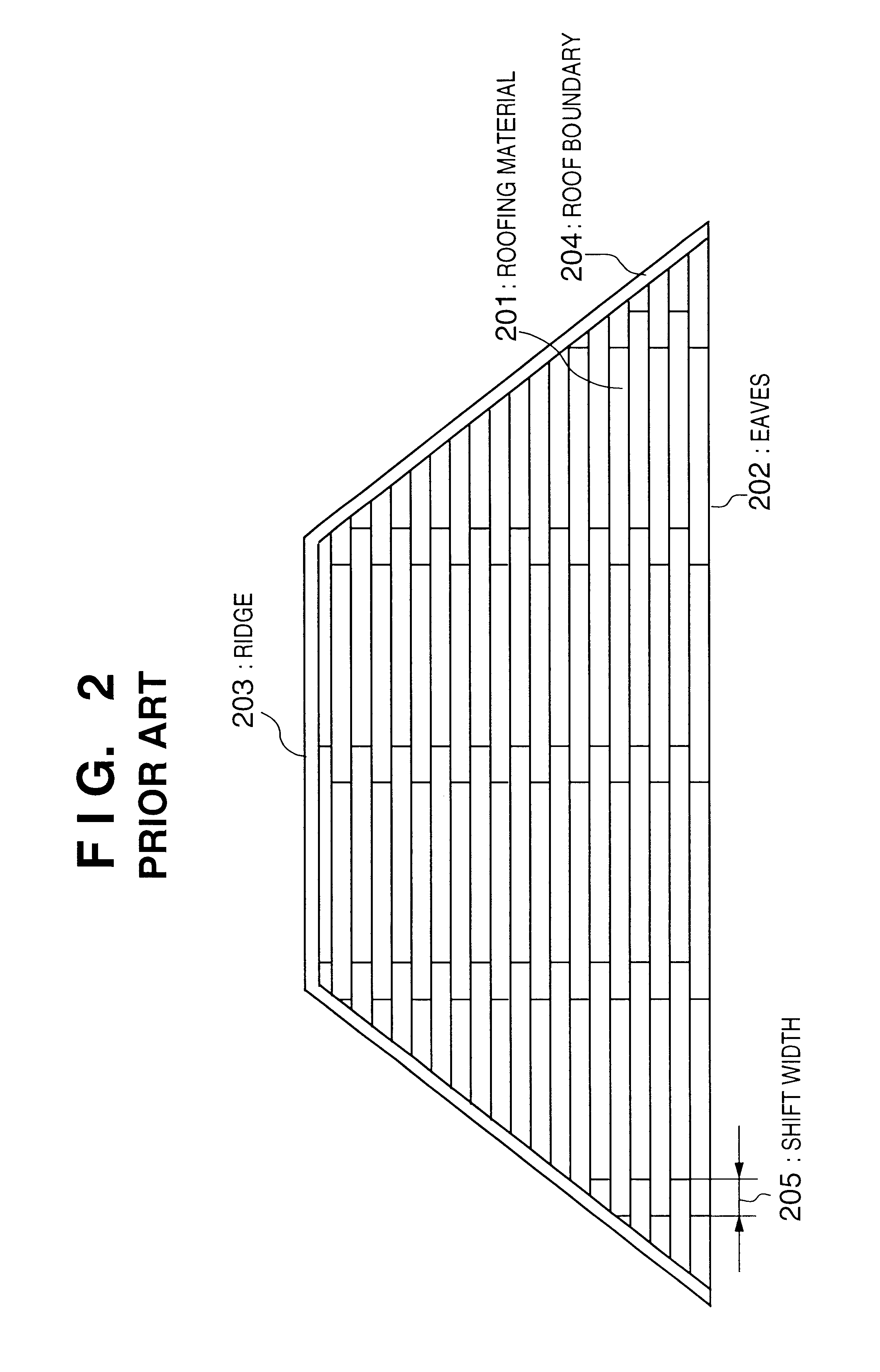Solar battery module arranging method and solar battery module array
a solar battery and module array technology, applied in the field of solar battery module array arranging method and solar battery module array, can solve the problems of poor outer appearance, difficult electrical wiring, and degraded roof appearan
- Summary
- Abstract
- Description
- Claims
- Application Information
AI Technical Summary
Benefits of technology
Problems solved by technology
Method used
Image
Examples
third embodiment
[Third Embodiment]
FIG. 12 is a view showing a state wherein the above-described roofing material integrated solar battery modules SR-02 are arranged in an allowable setting range 1202 on a triangular roof whose eaves 1204 have a length L1 of 9,200 mm and roof inclination has a length A1 of 5,050 mm in accordance with the procedure shown in the flow chart of FIG. 22 while setting a gap g1 from the eaves 1204 to the allowable setting range 1202 to be 0 mm, and a gap g3 from a roof boundary 1205 to the allowable setting range 1202 to be 200 mm. The setting procedure will be briefly described below. The same numbers as in FIG. 19 denote the same steps in the flow chart of FIG. 22, and a detailed description thereof will be omitted.
[Calculation of Maximum Setting Number of Lines (Steps S1 to S3)]
A length A of the allowable setting range 1202 in the inclination direction is given by:
A=A1-g1=5,050-200=4,850 mm
The number C of lines is given by the following inequality, and a maximum setting...
fourth embodiment
[Fourth Embodiment]
FIG. 15 is a view showing a state wherein frame mounted solar battery modules (W=822 mm, and .lambda.=1,220 mm) are arranged in an allowable setting range 1502 on a trapezoidal roof whose eaves 1504 have a length L1 of 12,000 mm, ridge 1506 has a length L2 of 3,640 mm, and roof inclination has a length A1 of 4,957 mm in accordance with the procedure shown in the flow chart of FIG. 20 while setting a gap g1 from the eaves 1504 to the allowable setting range 1502 to be 500 mm, a gap g2 from the ridge 1506 to the allowable setting range 1502 to be 500 mm, and a gap g3 from a roof boundary 1505 to the allowable setting range 1502 to be 300 mm. The setting procedure will be briefly described below.
[Calculation of Maximum Setting Number of Lines (Steps S1 to S3)]
A length A of the allowable setting range 1502 in the inclination direction is given by:
A=A1-g1-g2=4,957-500-500=3,957 mm
The number C of lines is given by the following inequality, and a maximum setting number C...
fifth embodiment
[Fifth Embodiment]
FIG. 17 is a view showing a state wherein the above-described roofing material integrated solar battery modules SR-02 are arranged on an Irimoya-type roof whose eaves 1704 has a length L1 of 9,000 mm, ridge 1706 has a length L2 of 5,000 mm, roof inclination direction of the trapezoidal portion has a length A1 of 1,390 mm, and roof inclination of the rectangular portion has a length A2 of 2,570 mm in accordance with the procedure shown in the flow chart of FIG. 23 while setting gaps g1 to g3 from the eaves 1704, ridge 1706, and roof boundary 1705 to the allowable setting range to be 200 mm. The same numbers as in FIG. 19 denote the same steps in the flow chart of FIG. 23, and a detailed description thereof will be omitted. The "Irimoya-type roof" means that the upper portion of one roof surface is formed into a gable, and roof surfaces are formed at the four lower sides of the lower portions.
[Calculation of Maximum Setting Number of Lines (Steps S1 to S3)]
A length A...
PUM
 Login to View More
Login to View More Abstract
Description
Claims
Application Information
 Login to View More
Login to View More - R&D
- Intellectual Property
- Life Sciences
- Materials
- Tech Scout
- Unparalleled Data Quality
- Higher Quality Content
- 60% Fewer Hallucinations
Browse by: Latest US Patents, China's latest patents, Technical Efficacy Thesaurus, Application Domain, Technology Topic, Popular Technical Reports.
© 2025 PatSnap. All rights reserved.Legal|Privacy policy|Modern Slavery Act Transparency Statement|Sitemap|About US| Contact US: help@patsnap.com



